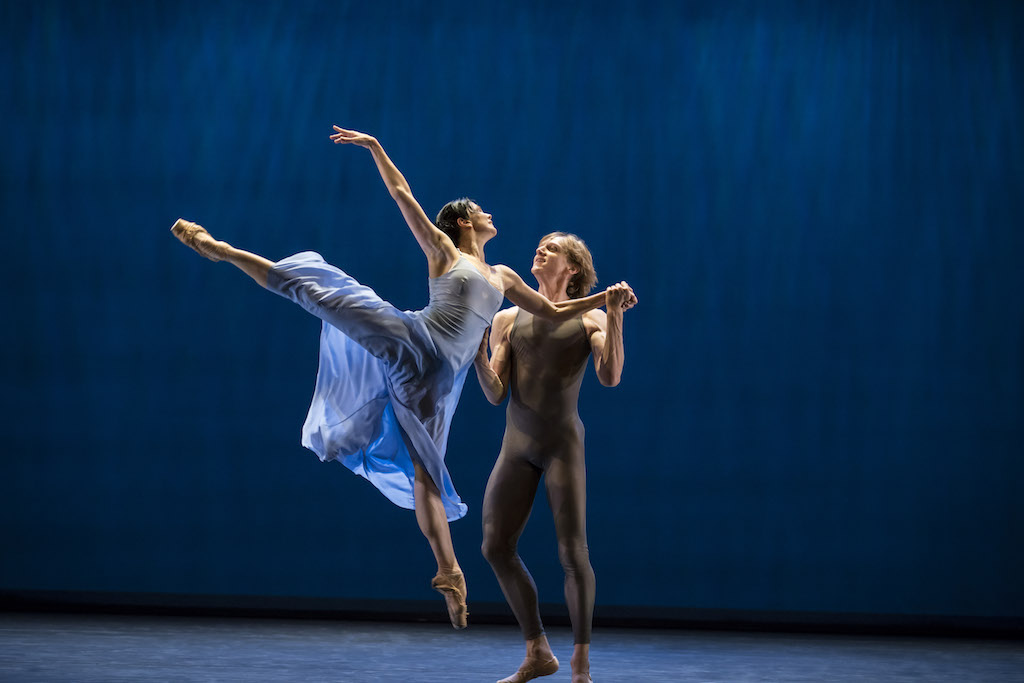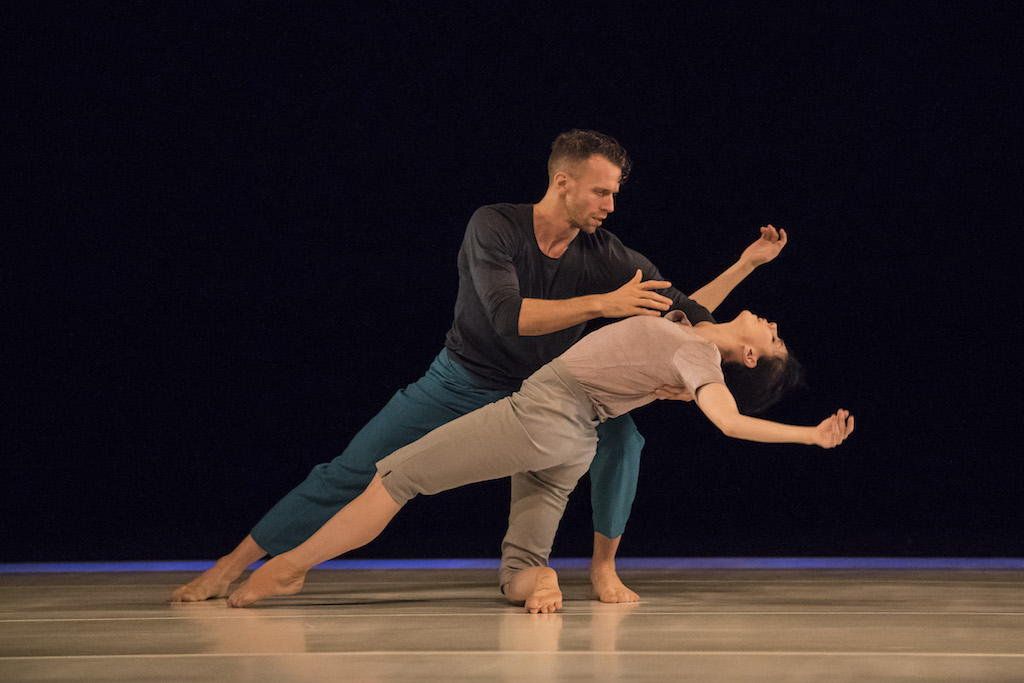Sometimes a dance talent arrives that causes the ground to shift and alters the landscape. Natalia Osipova is one such. Not content to be queen of all she surveys at the Royal Ballet, she is hungry for new territory. Pure Dance is the second solo programme of classical and contemporary work she has presented at Sadler’s Wells and then toured around the world, and this is its (expanded) second edition.
Of course this is not the first time a great ballet dancer has turned to contemporary dance. Mikhail Baryshnikov and then Sylvie Guillem famously added more than a decade to their performing careers by embracing a new way of moving. But Osipova isn’t looking to put less strain on her hip joints. Far from it. At 33 she’s at her physical peak and clearly wants to set new challenges for her body and brain, to see how far off-piste she can take them. Significantly, not one of the six pieces she takes on in this programme gives her an easy ride, not even to give her a breather. Not all of the choreographic choices come off well, but one thing is certain – this is no vanity project.
 Perhaps to reassure her public, she bookends the programme with two pieces of modern classicism, Antony Tudor’s wistful The Leaves Are Fading and Alexei Ratmansky’s Valse Triste. Commissioned by Osipova from her former boss at the Boshoi, the latter is the more full-bloodied and suits her dramatic temperament. The inclusion of some classical has the bonus of giving fans a closer look at Osipova’s burgeoning dance partnership with David Hallberg, the beauteous American who joins the Royal as a principal guest artist this season. Pictured above, they are indeed a compelling pairing: light and dark; ice and fire.
Perhaps to reassure her public, she bookends the programme with two pieces of modern classicism, Antony Tudor’s wistful The Leaves Are Fading and Alexei Ratmansky’s Valse Triste. Commissioned by Osipova from her former boss at the Boshoi, the latter is the more full-bloodied and suits her dramatic temperament. The inclusion of some classical has the bonus of giving fans a closer look at Osipova’s burgeoning dance partnership with David Hallberg, the beauteous American who joins the Royal as a principal guest artist this season. Pictured above, they are indeed a compelling pairing: light and dark; ice and fire.
Valse Triste starts out as an amusingly old-fashioned waltz, almost tongue-in-cheek romantic, set to unfamiliar music by Sibelius. The mood gradually darkens as the woman is stricken by bouts of doubt, anxiety and ultimately what looks like a wish to self-destruct in a series of increasingly desperate dives. Hallberg makes an effective if initially reluctant life saver. With the dramatic tension of an Ibsen tragedy packed into six minutes, it is superb.
 Other duets on the bill lack that concision, sometimes losing the audience in their meanderings. Israeli choreographer Roy Assaf’s Six Years Later – performed with Osipova’s real-life partner Jason Kittelberger (pictured above) – almost grinds to a halt several times although its premise – an ex-couple raking over the coals – throws up some fascinating ideas. At one point the pair biff one other with alternate shoulders so long and so hard that it looks as if it’s meant to hurt. Another sequence sees them united in a rather beautiful knotting and unknotting of forearms, repetition pushed to a point where an apparently loving gesture starts to look masochistic. Like memory itself, Six Years Later is a mixture of snapshots and lacunae, with little continuity. When the pair stop to chat for several minutes, a cheesy pop song drowning them out, it feels as if you’ve stumbled in on a rehearsal, not a performance at all. This is dance that stretches the very definition of dance.
Other duets on the bill lack that concision, sometimes losing the audience in their meanderings. Israeli choreographer Roy Assaf’s Six Years Later – performed with Osipova’s real-life partner Jason Kittelberger (pictured above) – almost grinds to a halt several times although its premise – an ex-couple raking over the coals – throws up some fascinating ideas. At one point the pair biff one other with alternate shoulders so long and so hard that it looks as if it’s meant to hurt. Another sequence sees them united in a rather beautiful knotting and unknotting of forearms, repetition pushed to a point where an apparently loving gesture starts to look masochistic. Like memory itself, Six Years Later is a mixture of snapshots and lacunae, with little continuity. When the pair stop to chat for several minutes, a cheesy pop song drowning them out, it feels as if you’ve stumbled in on a rehearsal, not a performance at all. This is dance that stretches the very definition of dance.
Contemporary dancer Jonathan Goddard is Osipova’s Third Man, as it were, though his talents are woefully underused in Flutter, by Ivan Perez, another loose, experimental number. Larking about in a patch of light, the couple repeatedly run off into the dark, giggling like children. Some will question why a ballerina at the peak of her powers would want to engage in stuff like this. The answer is there in the question. She’s at the peak of her considerable powers, so why not?
- Natalia Osipova: Pure Dance at Sadler’s Wells until 25 October
- Read more dance reviews on theartsdesk














Add comment